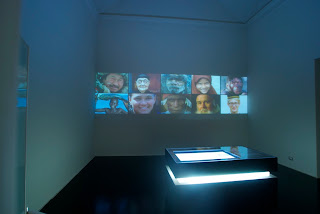Recently we talked about prototyping applied to the museum context. Maybe for those who are not accustomed to such matters, this argument can seem quite difficult to understand.
In particular, it may be difficult to imagine a 3D printer that works to build dioramas. The idea of diorama, in fact, remained quite frozen in the representations housed behind the windows of the natural history museums of the nineteenth century and much of the twentieth century.
These are hand-crafted dioramas, often made using materials taken from the natural environments of origin of the animals of which is meant to represent the habitat. Today, the dioramas are designed differently, meeting even the most modern artistic aspect in some successful demonstrations.
To aid people to understand, I'll give an example of prototyping completely divorced from the museal context. In fact, I will speak of the use of prototyping in fashion, illustrating the work of Iris van Herpen.
Iris van Herpen, born in Holland in 1984, became known for his clothes really special: two of her cherished customers are Lady Gaga and Björk.
After a sketch of the dress, Van Herpen drapes it on a virtual model and then entrusts the result to Materialise, a Belgian company that makes 3D prints. As she says, during this process, his tailoring is transformed into a laboratory where creation, emotion and technology fuse together to give a really particular aesthetic vision.
What impressed the fashion world, it was the perfect combination of craftsmanship knowledge and applications of new technologies. The end result is a suit that surprises for its consistency somewhere between the organic and the synthetic way. A synthetic way that seems to come from the future.
It is no coincidence that TIME Magazine has included her clothes among the 50 best innovations of 2011.
Her models are composed of different materials ranging from rubber to plastic. It's interesting the comment of the stylist about her "first time" with the prototyping:
The first time I used 3D printing, it completely changed my thinking. It freed me from all physical limitations. Suddenly, every complex structure was possible and I could create more detail than I ever could by hand.Instead of depleting her creativity, prototyping expands it, opening new horizons. If this was possible in the field of fashion, why can't it could do in the area of cultural heritage?



























































